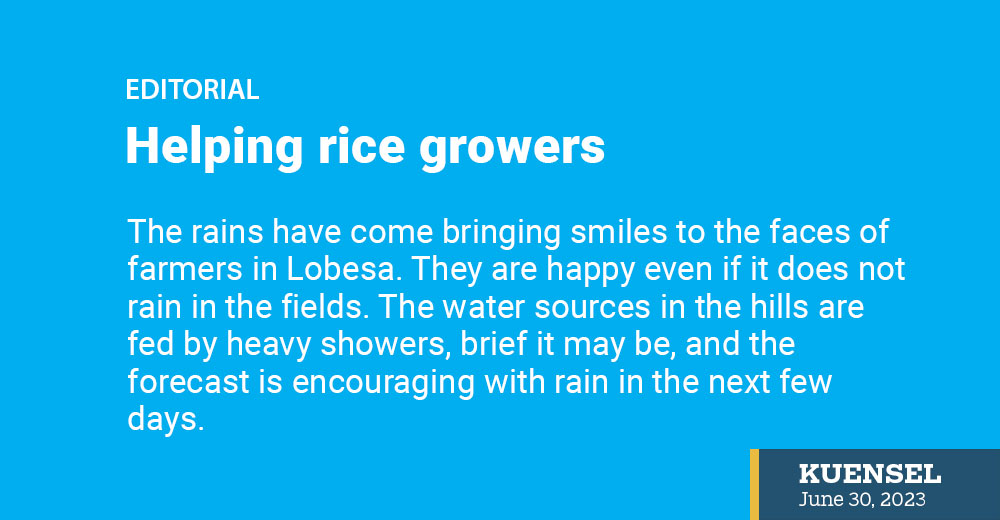The rains have come bringing smiles to the faces of farmers in Lobesa. They are happy even if it does not rain in the fields. The water sources in the hills are fed by heavy showers, brief it may be, and the forecast is encouraging with rain in the next few days.
It is the season for paddy transplantation. Delay in transplantation means a year lost as crops will not mature on time. It had happened in villages like Tsephu, Punakha in the recent past. Last week, in Lobesa, the problem escalated, needing police intervention.
Paddy is a water-intensive crop and needs water for almost four months. For generations, farmers have relied on paddy in the fertile Punakha-Wangdue valley. Farmers are seeing changes. Water shortage or delayed monsoon is worsening every year. Irrigation water has been dominating local issues in the last many years. Governments have come and gone with promises, unfortunately, the problem remains.
Records with the agriculture ministry show that agricultural land under cultivation is on the decline. Shortage of water is the main culprit. Reduction in irrigation water has resulted in a significant increase in fallow land. Only about 26,000 acres of wetlands are currently under cultivation out of the registered 70,000 acres, according to one report.
In the Punakha-Wangdue valley, there are a lot of paddy fields left empty. While there could be many factors, farmers attribute it to the shortage of water. Logically, there should be enough water if fallow lands are increasing. It is not happening.
In a week or two’s time, transplantation will be completed. Farmers will stop complaining or fighting, there will be no news coverage and everything will be forgotten until the next cultivation season. We should not let this happen. Next year is going to be hotter and drier as scientists forecast the El Nino weather event in 2024. Some say it has already begun. We will feel the impact as El Nino weakens the Indian monsoon on which we depend.
Are we planning? Are we even aware? Our agriculture is heavily dependent on monsoon rain, which accounts for 60 to 90 percent of annual precipitation. A dry year would spell trouble for the country, especially if India, from where we import all our food, is also affected.
However, as a mountainous country, we see some advantages. We have a good river system. The streams and rivers are not drying up even when the monsoon is delayed. But most of our rivers that flow between deep valleys are not helping farmers. That is where technology comes in. For short-term solutions, enabling farmers to pump water from rivers and streams could ensure timely cultivation. Yet, changes in climatic conditions, studies say, present a grim future for rice-growing farmers.
Climate-smart agriculture is the new talk as we strive to adjust to changing climatic conditions. How much is happening on the ground is not known. From the way farmers in Punakha cultivate rice, the way they grow rice has not changed at all except for the use of power tillers. The decision of climate-smart agriculture made in air-conditioned offices with financial support from donors or agencies should make impacts on the ground. Educating farmers and convincing them will be a good start.


